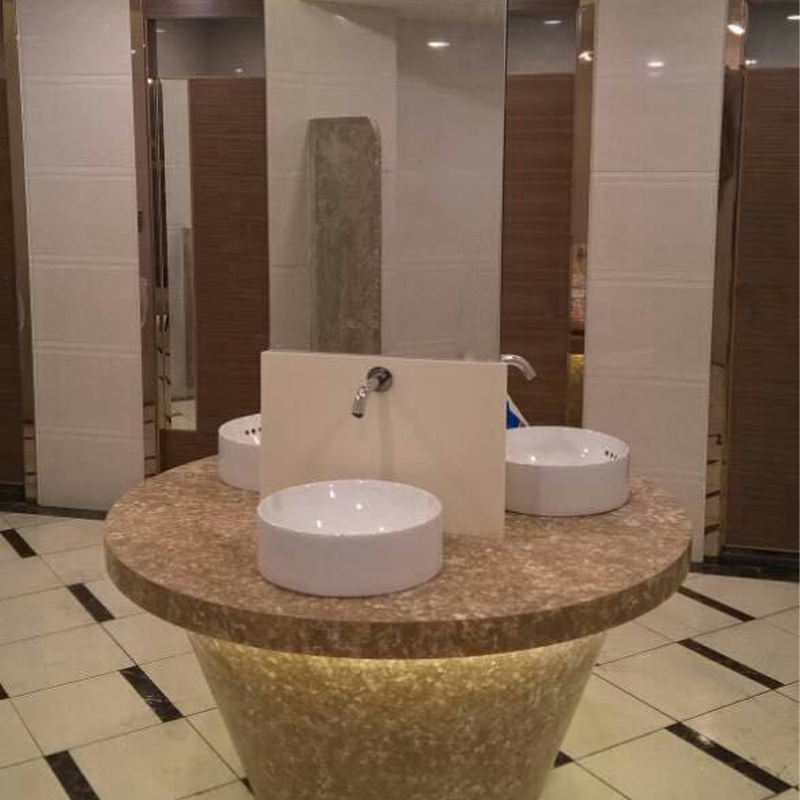
Cultured Marble Sinks offer a blend of elegance and durability, combining the beauty of natural marble with the affordability and versatility of man-made materials. However, like any surface, cultured marble requires proper care and maintenance to preserve its appearance and longevity. In this guide, we’ll explore essential tips and best practices for cleaning, maintaining, and protecting your Cultured Marble Sink.

Before diving into care tips, it’s important to understand what cultured marble is. Cultured marble is a man-made product created by blending natural marble dust with polyester resins and pigments. This mixture is molded into various shapes and then coated with a clear gel layer that gives it a glossy, smooth finish. This protective gel coat makes the surface more resistant to stains and damage but also requires specific cleaning techniques to prevent dulling or scratching over time.
Use mild, non-abrasive cleaners: Cultured marble sinks can be easily cleaned using a gentle soap or a mild, non-abrasive cleaner. Simply mix warm water with dish soap, apply it to the sink surface with a soft cloth or sponge, and wipe it clean. Rinse with clean water and dry with a soft towel to avoid water spots.
Avoid harsh chemicals: Strong chemicals, such as bleach, ammonia, or acidic cleaners, can damage the protective gel coat and cause discoloration or dullness. Stick to pH-neutral cleaners or specially formulated cultured marble cleaning products to maintain the glossy finish.
Clean spills immediately: Although cultured marble is resistant to stains, substances like coffee, wine, or cosmetics can cause discoloration if left for long periods. Clean spills promptly using water and a soft cloth to prevent stains from setting in.
Use a gentle surface cleaner: Once a week, give your sink a more thorough cleaning using a gentle surface cleaner designed for cultured marble. Spray the cleaner onto the surface, allow it to sit for a few minutes, and then wipe with a soft cloth or sponge. Rinse thoroughly with water and dry.
Avoid scouring pads: Abrasive sponges, scouring pads, or steel wool should never be used on cultured marble, as they can scratch the gel coat and leave unsightly marks.
While cultured marble sinks are durable, the surface can still scratch or dull if not properly cared for. To maintain the shine and avoid damage:
Always clean your sink with soft materials such as microfiber cloths, non-abrasive sponges, or soft-bristle brushes. Avoid using anything that could cause friction and potentially damage the surface.
Be cautious when placing heavy objects like bottles, hairdryers, or beauty tools on the sink’s surface. Sharp objects can scratch the sink, while heavy objects may crack or chip the gel coat if dropped.
Although cultured marble is heat-resistant, direct exposure to extreme heat (such as placing hot curling irons or straighteners on the sink) can damage the gel coat. Always use heat-resistant mats or trivets to protect the surface from heat.
Even with regular cleaning, occasional stains may occur on a cultured marble sink. The key to removing stains without damaging the surface lies in choosing the right method:
For minor stains, a paste made from baking soda and water can be effective. Apply the paste to the stained area, let it sit for a few minutes, and then gently scrub it with a soft cloth or sponge. Rinse with water and wipe dry.
For tougher stains (such as from makeup, hair dye, or hard water), you can use a non-abrasive cleaning product specifically designed for cultured marble. Always test the cleaner on a small, inconspicuous area before applying it to the entire stain.
For stubborn stains, a 50/50 mixture of water and white vinegar can be used as a natural solution. Apply the mixture to the stain, let it sit for a few minutes, and gently wipe clean. Be sure to rinse the surface thoroughly afterward to remove any residual vinegar.
Over time, even with regular cleaning, the glossy finish of Cultured Marble Sinks can become dull. To maintain the shine and prevent dulling:
Apply a cultured marble polish or car wax to the sink once every few months. This helps restore the gloss and provides an extra protective layer against water spots and stains. Simply apply the wax with a soft cloth, buff it into the surface in circular motions, and wipe off the excess.
Hard water can leave mineral deposits on the sink’s surface, causing it to lose its shine. To prevent hard water deposits, wipe down the sink after each use with a soft towel. This practice not only prevents deposits but also minimizes water spots.
If your cultured marble sink develops small scratches or chips, there are ways to restore the surface:
Light scratches can often be buffed out using a polishing compound designed for cultured marble. Apply the compound to the scratch, buff with a soft cloth in circular motions, and then rinse and dry the area.
For more severe damage, such as chips or cracks, you may need to use a cultured marble repair kit. These kits typically contain resin fillers that can be used to patch the damaged area. After applying the filler, sand the surface lightly with fine-grit sandpaper, and then polish to restore the shine. If the damage is extensive, it’s recommended to consult a professional.
To extend the lifespan of your cultured marble sink and keep it looking new for years:
Place rubber mats or trays in the sink to protect it from heavy objects or items that may accidentally cause scratches.
Although the gel coat provides protection, some homeowners opt to apply an additional sealer to provide extra protection from water and stains. Always use a sealer that is compatible with cultured marble.
Cultured Marble Sinks are an excellent combination of beauty and practicality, but like any high-quality surface, they require proper care to maintain their appearance and functionality. By following these cleaning and maintenance tips, you can keep your cultured marble sink looking as stunning as the day it was installed. With regular attention and a little preventive care, your sink will remain a centerpiece in your kitchen or bathroom for years to come.
For specific products or detailed assistance, always refer to the manufacturer’s recommendations to ensure the best results.